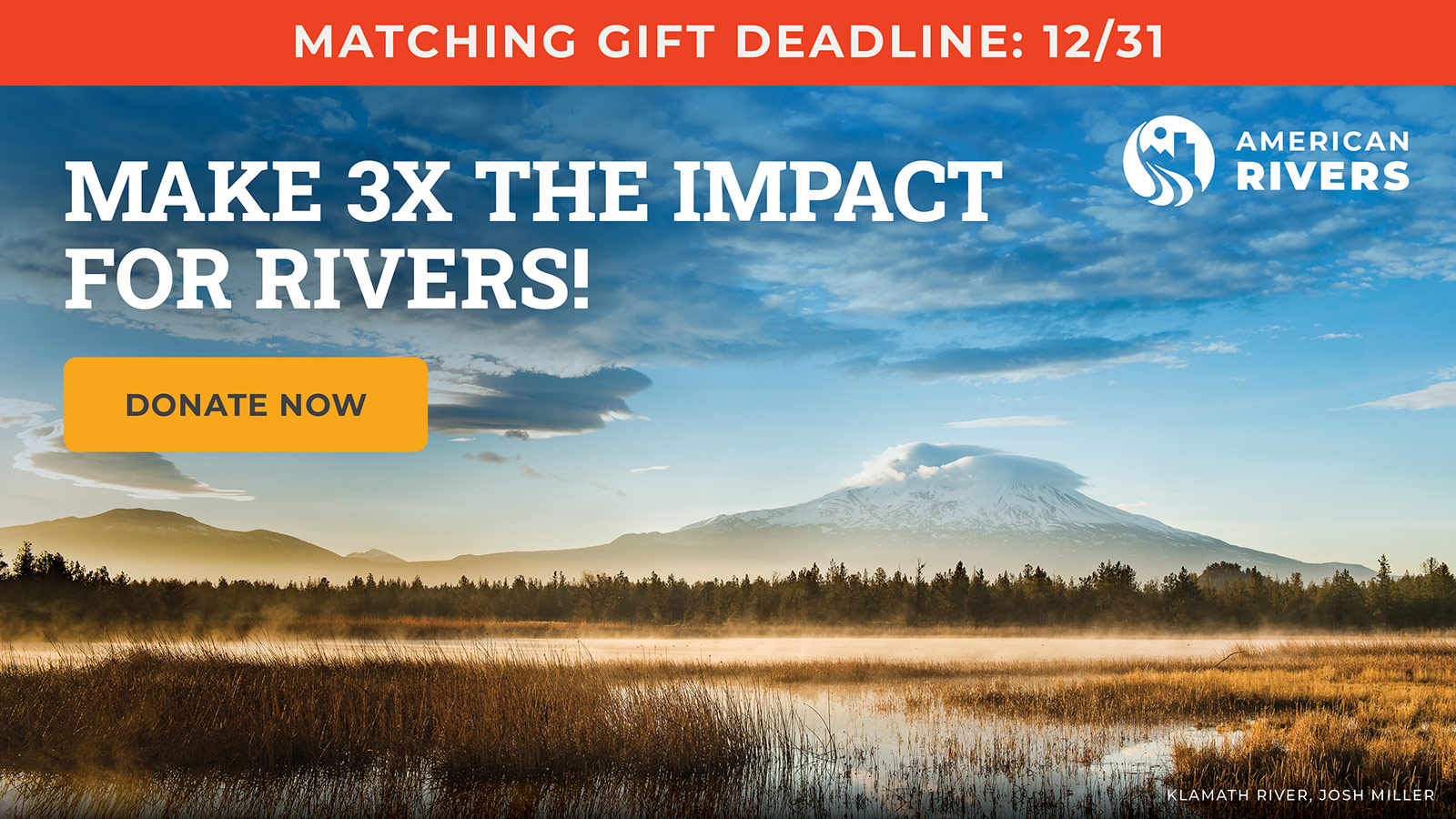American Rivers Announces America’s Most Endangered Rivers of 2022
Climate change, environmental injustice threaten rivers and communities nationwide.
Report identifies solutions, calls for urgent action on ten endangered rivers.
Contact:
Amy Souers Kober, American Rivers, 503-708-1145
www.AmericanRivers.org/EndangeredRivers
Washington, DC – American Rivers released its annual list of America’s Most Endangered Rivers® today, spotlighting ten rivers where climate change and racial injustice are putting the water supplies and well-being of tens of millions of people at risk. America’s Most Endangered Rivers of 2022 calls for specific solutions, amplifying the leadership of Tribal Nations and frontline advocates.
“All life on this planet depends on clean, flowing rivers. So when rivers are at risk we sound the alarm. America’s Most Endangered Rivers is a call for bold and urgent action,” said Tom Kiernan, President and CEO of American Rivers.
The Colorado River (#1) is ground zero for the climate crisis as water levels plummet, threatening the lifeblood of 30 federally recognized Tribal Nations and seven states. On the Pacific Northwest’s Snake River (#2), dams and rising water temperatures have driven salmon to the brink of extinction and are violating treaties with Tribal Nations. Pollution along Alabama’s Mobile (#3) and Coosa (#5) rivers will be exacerbated by increasingly severe flooding, disproportionately impacting Black communities.
“We must come together as a powerful movement, to speak up for the 10 endangered rivers, and for all of the rivers that are vital to our lives,” Kiernan said.
Climate change is here now, and the primary way that each of us is experiencing climate change is through water. The latest IPCC report released in February warned that climate change is bringing severe consequences – from increasing floods and failing dams that endanger entire communities, to droughts and tapped-out water supplies that put industries, economies and ecosystems at risk. Black, Indigenous, Latino/a/x and other communities of color feel these impacts most acutely, due to historical and contemporary policies, practices and norms that maintain inequities.
Nowhere are the impacts more stark than on the Colorado River, America’s Most Endangered River for 2022, which is so overtapped it dries up before reaching the sea. Rising temperatures and drought driven by climate change, combined with outdated river management and overallocation of limited water supplies, threaten the entire region. The Colorado River system is already operating at a deficit, and climate change is expected to further reduce the river’s flow by 10 to 30 percent by 2050.
For the first time ever, mandatory cutbacks triggered by water shortage will cause Arizona to lose more than 500,000 acre-feet in Pinal County alone (roughly the drinking water supply for nearly 1.5 million households).
The river supports some of the country’s largest cities including Denver, Salt Lake City, Santa Fe, Las Vegas, Los Angeles, San Diego and Phoenix. It provides drinking water for 40 million people, irrigates 5 million acres of farm and ranch land, and supports a $1.4 trillion economy. Yet many Tribal Nations across the basin suffer from a lack of modern water infrastructure, due to systemic inequities and historic disinvestment.
American Rivers called on the seven basin states and the Biden administration to engage with the basin’s tribes to address this emergency. The administration must immediately allocate funds from the Infrastructure Investment and Jobs Act to implement proven, equitable solutions that prioritize river health and water security.
“Failure is simply not an option, given all that depends on a healthy, flowing Colorado River,” said Kiernan. “On the Colorado River and nationwide, the climate crisis is a water crisis. Just, equitable solutions for rivers and clean water are both achievable and essential to our health, safety, and future.”
In its 37th year, the America’s Most Endangered Rivers® campaign shines a national spotlight on rivers whose fates hang in the balance, elevates local advocacy efforts, and mobilizes the public to make a positive difference. Over the years, the report has helped spur many successes including the removal of outdated dams, the protection of rivers with Wild and Scenic designations, and the prevention of harmful development and pollution. American Rivers reviews nominations for America’s Most Endangered Rivers from local groups and individuals across the country, and selects rivers based on three criteria: 1) the river’s significance to people and wildlife, 2) the magnitude of the threat to the river and communities, especially in light of climate change and environmental justice, 3) a decision in the next 12 months that the public can influence.
America’s Most Endangered Rivers® of 2022
#1 Colorado RiverState: CO, UT, AZ, NV, CA, WY, NM, Mexico
Threat: Climate change, outdated water management
#2 Snake River
State: ID, WA, OR
Threat: Four federal dams
#3 Mobile River
State: AL
Threat: Coal ash contamination
#4 Maine’s Atlantic Salmon Rivers
State: ME
Threat: Dams
#5 Coosa River
State: TN, GA, AL
Threat: Agricultural pollution
#6 Mississippi River
State: MN, WI, IL, IA, MO, KY, TN, AR, MS, LA
Threat: Pollution, habitat loss
#7 Lower Kern River
State: CA
Threat: Excessive water withdrawals
#8 San Pedro River
State: AZ
Threat: Excessive water pumping; loss of Clean Water Act protections
#9 Los Angeles River
State: CA
Threat: Development, pollution
#10 Tar Creek
State: OK
Threat: Pollution
ABOUT AMERICAN RIVERS
American Rivers believes a future of clean water and healthy rivers for everyone, everywhere is essential. Since 1973, we have protected wild rivers, restored damaged rivers and conserved clean water for people and nature. With headquarters in Washington, D.C., and 300,000 supporters, members and volunteers across the country, we are the most trusted and influential river conservation organization in the United States, delivering solutions for a better future. Because life needs rivers. www.AmericanRivers.org


